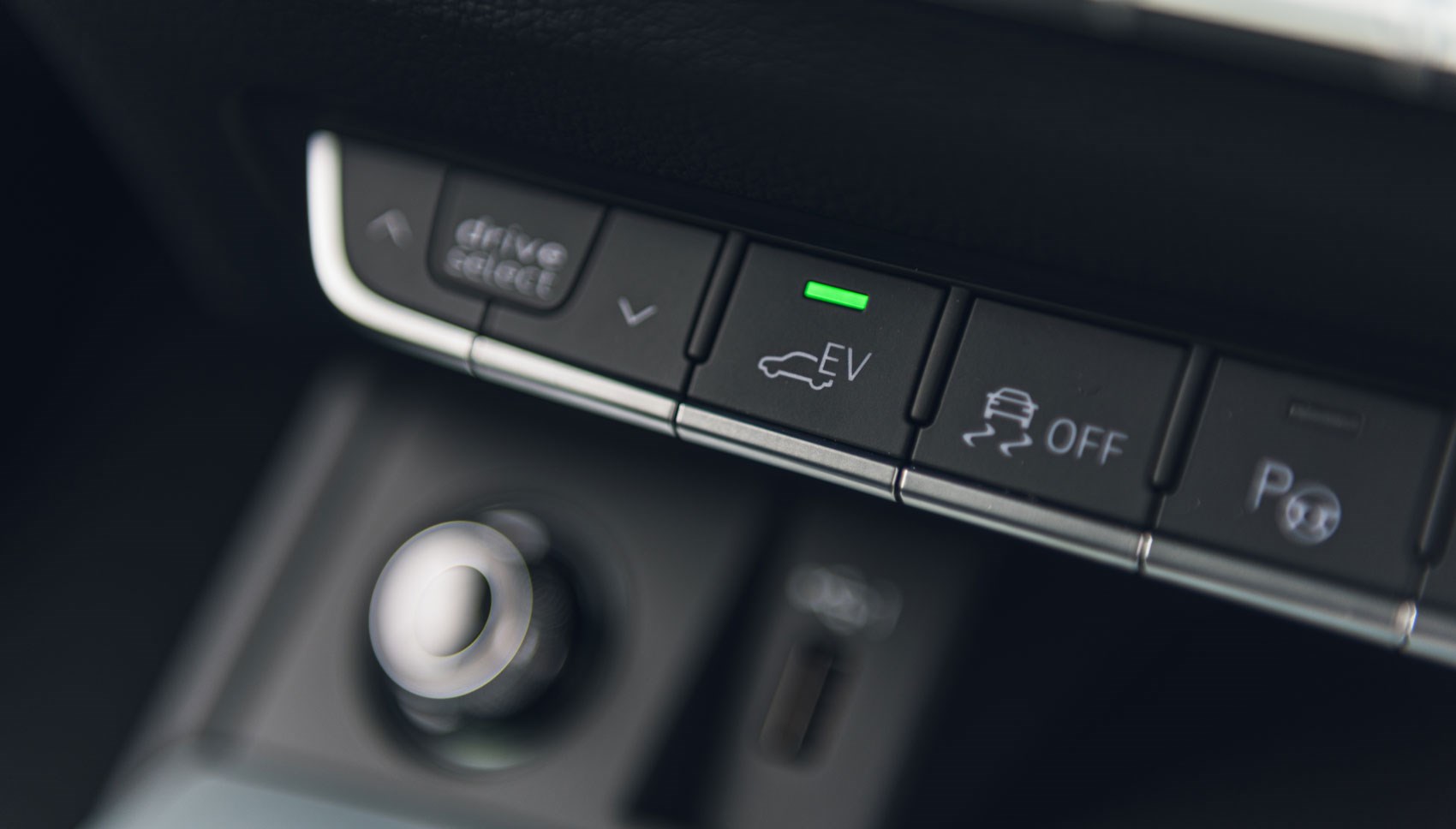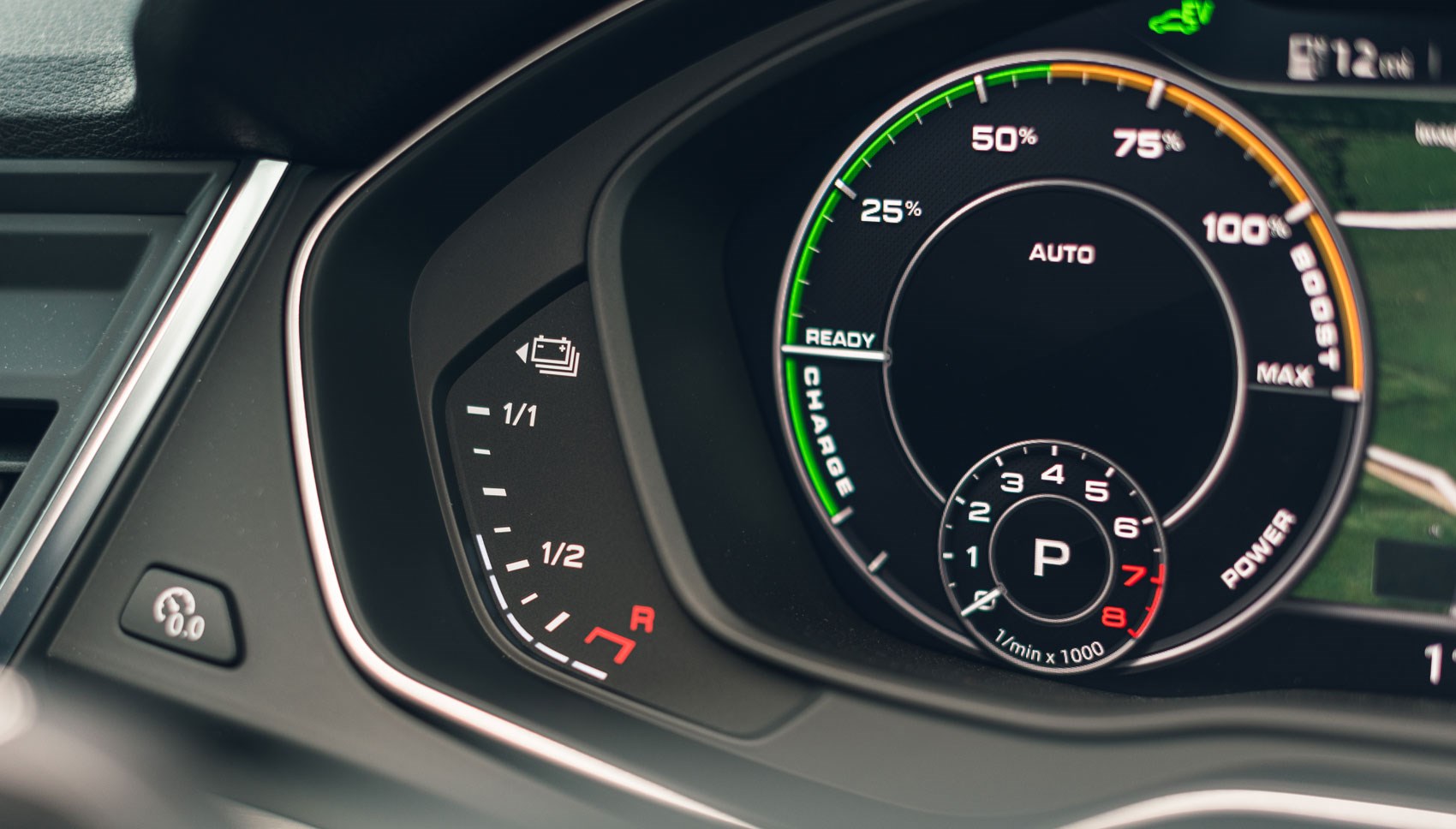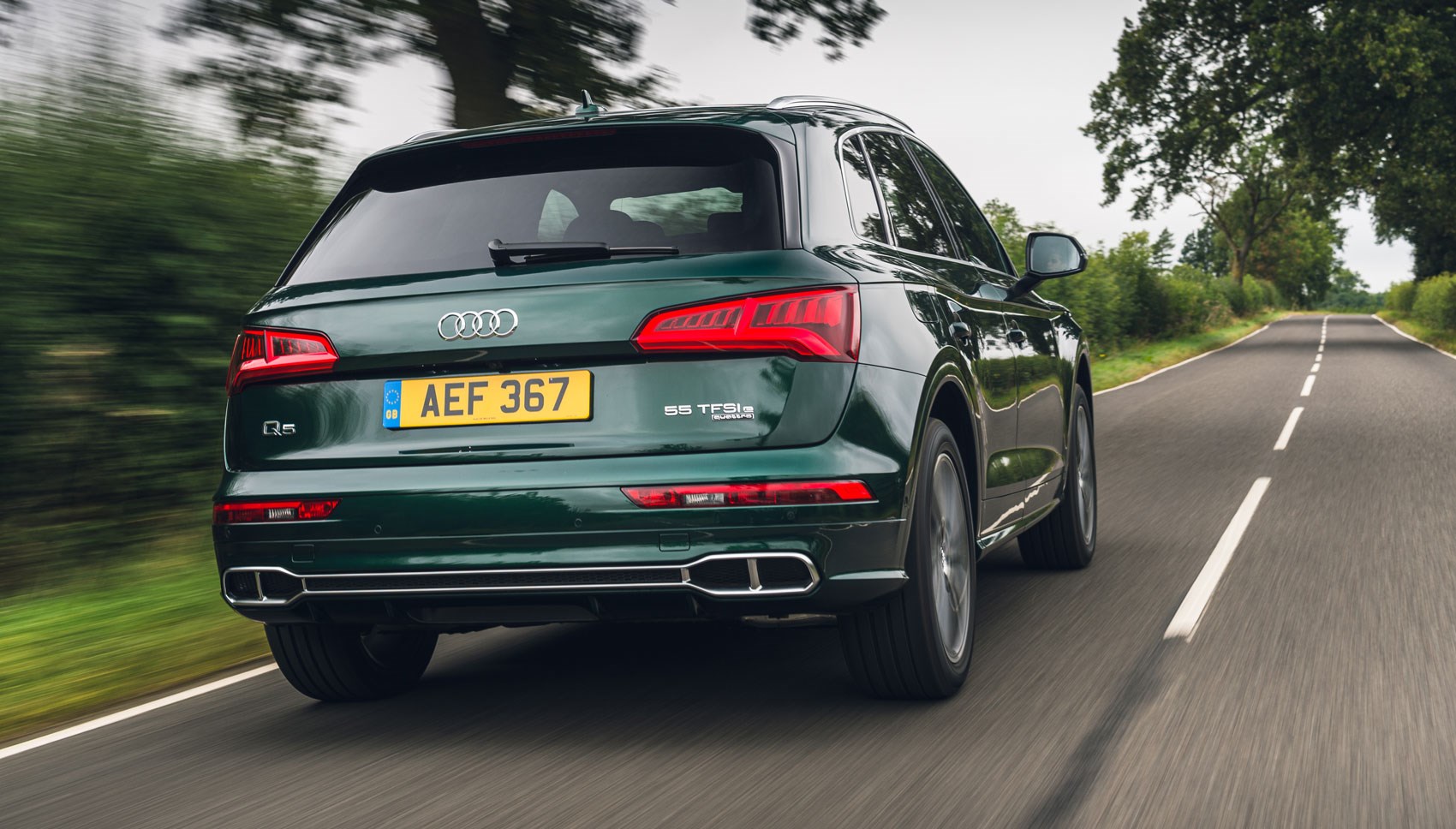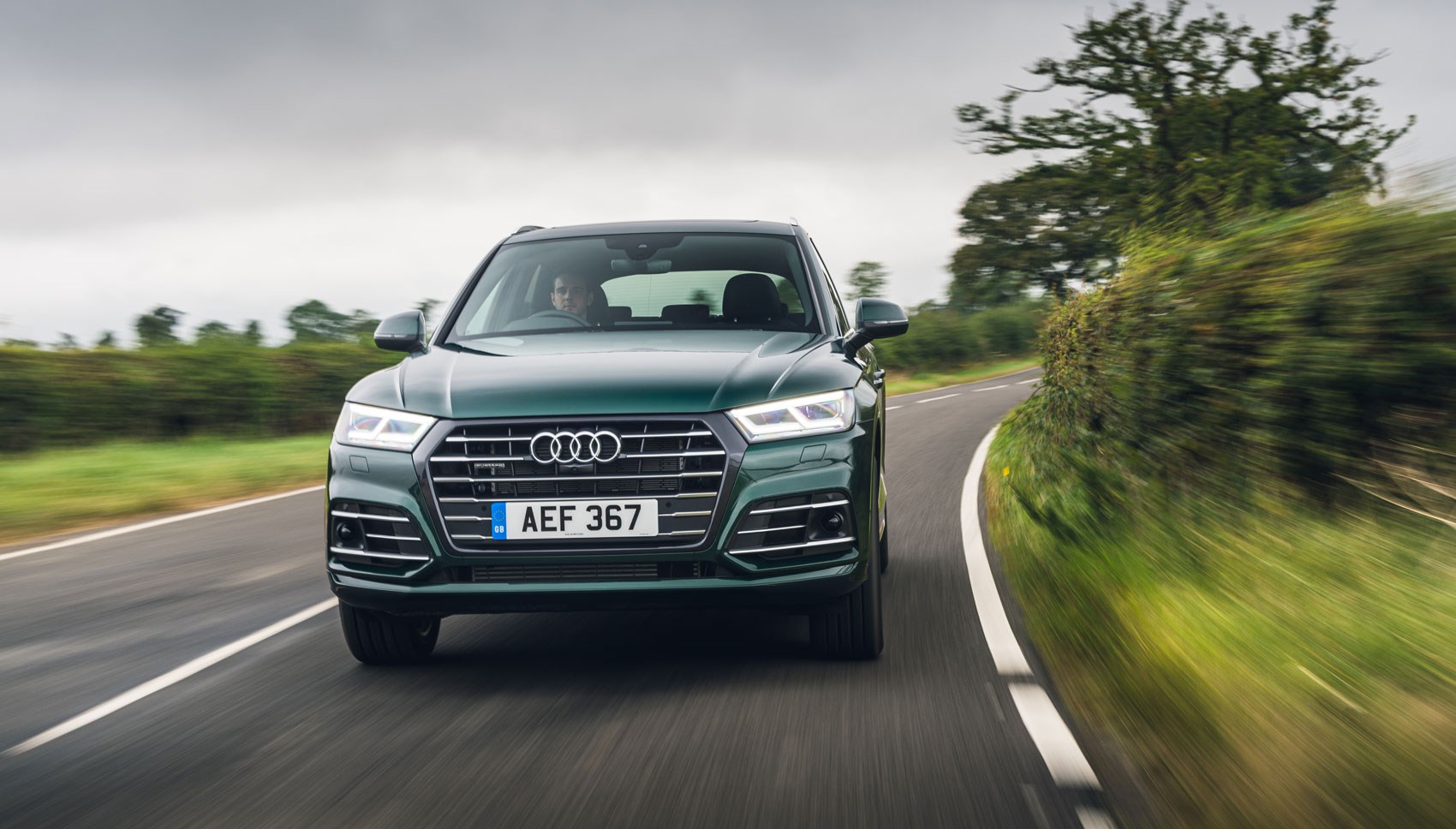► PHEV version of Q5 SUV tested
► Innovative tech anticipates regen
► E-motor paired with choice of petrols
It’s starting to become a familiar recipe, isn’t it? Plug-in hybrids take the cars you already know and love, then add in an electric motor and small(ish) battery – sometimes even with fast-charging capabilities – and the result is a car that is familiar, but benefits from a couple-dozen miles of electric-only range, and far greater efficiency when motor and engine are used together.
That could well be used to introduce any car, but here it’s leading up to the Audi Q5 TFSIe hybrid. Because the recipe never really changes, this is a second-generation Audi Q5 – so it’s a roomy, comfortable, well-equipped and quick five-seat SUV – with newfound electrical assistance thrown in. Albeit one with some boot space robbed by the addition of the 14.1kWh battery.
All this talk of similarity raises many questions. Is it better to drive than other Q5s and other hybrids? Does it deliver on the supposed environmental benefits? Is it straightforward to live with? Do the sums add up? All is revealed in our Audi Q5 hybrid review,
What makes the hybrid different?
In the cabin, the differences are minimal, with an extra button and some supplementary information available via the instrument console and central screen. Externally, aside from a badge made up of one of Audi’s more baffling combinations of letters and numbers, you need to know what you’re looking for to spot that there are two filler flaps, one for petrol and the other for connecting the car to an electric charger.
Open the electric tailgate and you notice that it’s less capacious. Conventionally-engined Q5 boot space is good at 550 litres, but the PHEV is 155 shy of that figure due to its floor being higher. Plus, it contains a big bag containing the charging cables.

It would just about be possible to drive the Q5 hybrid oblivious to the fact that it’s a PHEV. If you had the instruments calibrated just so, and you didn’t notice that sometimes there’s even less engine noise than at other times, you might just think that this was a particularly smooth, fast, conventional Q5.
But if you’re paying 50 grand or more for a Q5 hybrid, you’ll most likely want to engage fully with its cleverness. It combines Ultra Technology – a Quattro variation that anticipates demand on the all-wheel-drive system – and Audi’s Predictive Efficiency Assistant. The latter adjusts the level of recuperation during coasting depending on nav data, your distance from the vehicle ahead and other factors. It can freewheel with the engine off or opt for recuperation and top up the battery.

PEA also liaises with adaptive cruise control to do some braking and accelerating for you, to maximise efficiency. Or if you’re driving with the cruise control off it will prompt you to ease off the gas if it thinks you’re driving wastefully. Grosser Bruder is watching you…
As well as the driving modes you get on other Audis by pressing the Drive Select button – Offroad, Dynamic and so forth – you also get three options from an EV button: EV (driving using just the battery, charge permitting), Battery Hold (to save some charge for later) and Hybrid (juggling petrol and battery power).
What are your choices?
There are two Q5 hybrids, the 50 and the 55, using the same turbocharged 2.0-litre petrol four, with a 14.1kWh battery.
The 50 has less power (295bhp) and is available in S Line, Black Edition and Vorsprung trims, costing from £49,005. The punchier 55, which works its electric motor harder for a system total of 362bhp, is available in S Line Competition (£54,170) guise – which includes LED lights front and rear, massage front seats, 20in alloy wheels, 20in alloys, Audi’s Virtual Cockpit instrumentation and MMI Navigation Plus – and the even swankier Vorsprung Competition (for £65,670).
The gearbox is a seven-speed dual-clutch paddleshift auto on all versions, and it’s exemplary.
How does it drive?
It’s quick, and it’s a lovely engine. It will do 84mph in EV mode, but that’ll naturally drain the battery pretty rapidly. Driven with the petrol engine and electric motor working in harmony, it breezes to 62mph in a fuss-free 5.3 seconds; the only quicker Q5 is the SQ version. The directly comparable Volvo XC60 Recharge T8 is 0.2 seconds slower and is aiming for a less sporty vibe.

Engaging Hybrid mode will automatically spread the battery charge over your journey, for instance aiming to do the final urban section of your journey in electric mode and arriving with the battery empty. Most braking in everyday driving will be by the electric motor, rather than the brakes
The reality is that unless your journeys are all short, or you’re very disciplined and organised with the Battery Hold button, you’ll soon eat through the bulk of the charge, and find yourself running on just the petrol engine.
The Q5 and other new Audi hybrids integrate the powertrain with the car’s sensors, sat-nav and adaptive cruise control. This manifests itself in several ways depending on a great many factors including your mode selection, your driving style, the distance to your destination and the traffic conditions.
If you’re heading rapidly towards a junction or a traffic jam, it might flash a green reminder, or send a pulse through the throttle pedal encouraging you to ease off, and when you have eased off it will decide whether you’re best off coasting along, friction free, or charging the battery with regenerative braking.
It can take a bit of getting used to, and isn’t always easy to predict – so, for instance, you’re sometimes coasting when you expect to be slowing, or vice-versa. Like a lot of adaptive cruise systems, the Q5’s copes badly with some roundabouts; it’s more in its element on motorways. And it’s easily overridden if you think it’s going too fast (approaching a roundabout that you can see is clogged) or going too slow (leaving roundabouts).

The bigger downside is caused by the weight brought by the hybrid hardware; it’s 290kg heavier than a similar non-hybrid petrol Q5, and there are times when you can feel it. It can be tail-heavy, with oddly light steering at times. And, on some surfaces, it’s peculiarly bouncy, as if the suspension is struggling to control the weight.
Who should be considering a Q5 hybrid?
There are two – overlapping – groups of people who are likely to be most interested in the Q5 hybrid: commuters and company car drivers.
Commuters because short journeys involving built-up areas are where electric-only running will be most likely to happen and most appreciated. And if you can charge the battery after every journey – better still, at somebody else’s expense – then that’s potentially a bit of a saving on petrol bills.
Company car drivers because they will benefit from the sub-50g/km CO2 figure, which puts it in a more advantageous bracket for Benefit in Kind tax.
If you can’t charge a car easily at home and/or work, if you’re not interested in BiK rates, and if you do a lot of longer journeys, this is not the car for you.

Audi Q5 plug-in hybrid: verdict
There are many pros and many cons to the Q5 hybrid, but also a lot of variables that depend on your circumstances. Do a lot of long journeys, for instance, and that heavy battery-related hardware can be dead weight for much of the time. Ditto if you don’t have ready access to a charger at the end of every journey. There are other Q5s that could suit you better.
The diminished boot is a problem for everyone. An SUV with such modest luggage carrying ability makes little sense, and there are times when the excellence of the powertrain is cancelled out by the harmful effects of the weight on the ride and handling.
If your circumstances align neatly with what the hybrid version offers, then you’re more likely to focus on the positives of the Q5 hybrid. The engine and gearbox work gloriously well. The cabin looks and feels good. It’s roomy, front and rear, and refined.
But even so, and given this Audi is now more than a couple of years old, there could now be more choice of better, less compromised hybrids available in your budget, with more range and less of a price premium.
Check out our Audi reviews